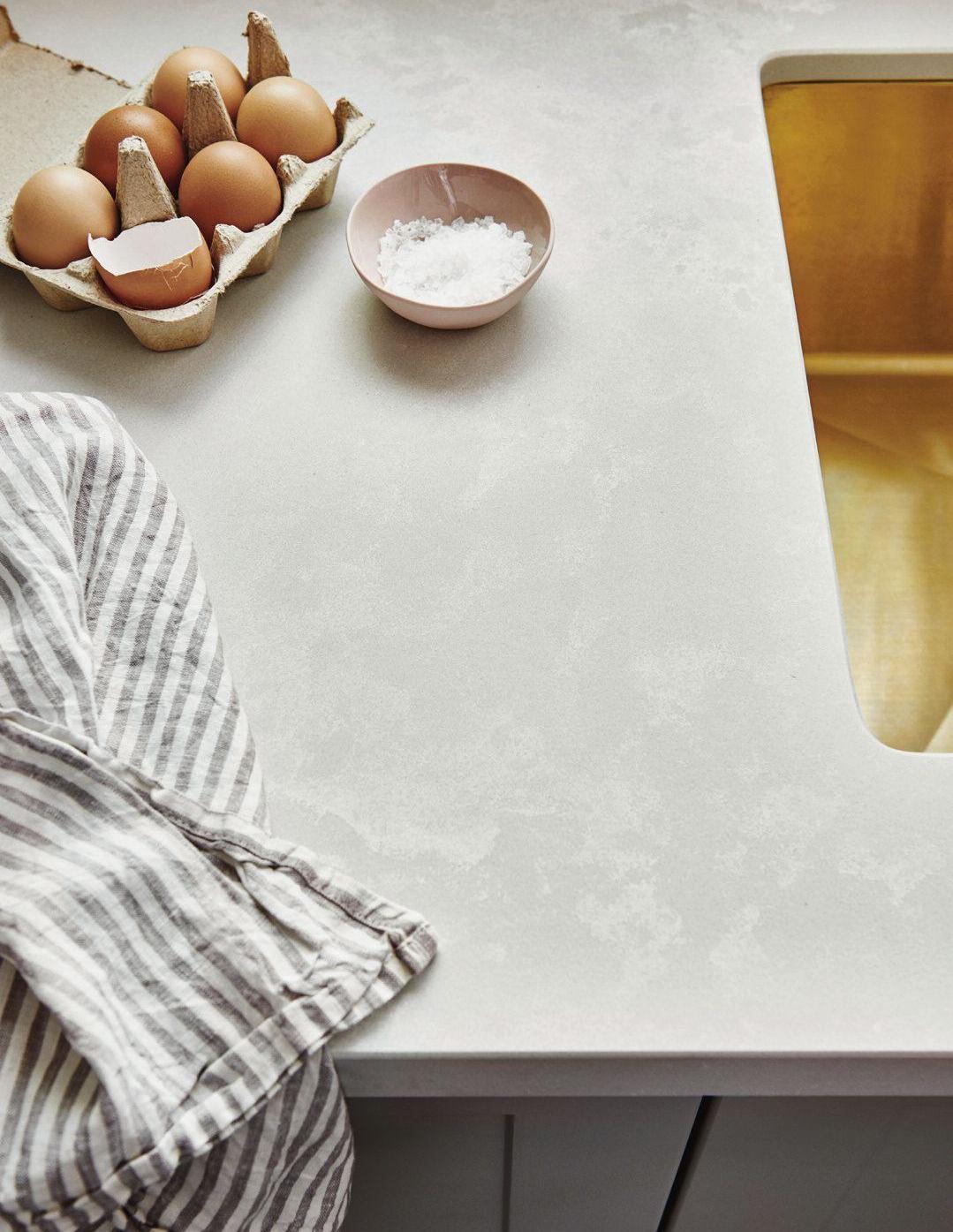
4 minute read
Top It Off

A KITCHEN COUNTERTOP CRASH COURSE
by Deanna Pisacreta
Countertops bear the brunt of our kitchen activity, from spills and crumbs to slices and dices. While it’s tempting to be swayed by aesthetics alone, the ability to withstand wear and tear is equally important. If not more. From butcher block to marble, here is a breakdown of top choices.

Butcher Block (typically $55-$200 per square foot)
This sturdy option is made of slabs of wood glued together to create a durable surface that can take a beating and handle chopping and cutting. “Wood countertops or wood inserts are a great way to bring warmth into a space,” says Benton Hosea, owner of Beetree Homes. The downside is that butcher block is neither heat nor stain resistant; moving a hot pan directly from the stove to this type of surface can result in scorch marks and charring to form, which will then have to be sanded out. Additionally, unfinished butcher block can be prone to water damage and excessive water may cause the wood to rot over time.
Laminate ($15-$45 per square foot)
Laminate surfaces stand up to everyday stains and scratches, and can be designed to resemble pricier natural stones, such as Carrara marble. It is prone to chipping, however, and is more sensitive to heat than natural stones. Laminate countertops don’t react well to spills, as letting them sit can cause the laminate to swell.


Concrete (typically $75-$145 per square foot)
“Concrete countertops are a great way to add some flair to your kitchen,” says Hosea. The cement and sand mixture can either be poured in place or cast off-site. As Hosea notes, the material once relegated to industrial floors is now a popular countertop option, and leaves plenty of room for personalization. For a unique look, concrete can be cast in a variety of shapes, tinted, or stained. However, this surface has a tendency to show scratches and stains over time, so best practice is to have a concrete countertop resealed every one to three years.

Ceramic ($5-$50 per square foot)
With this clay-fired stone option, the possibilities are nearly endless. Ceramic tiles come in a wide variety of colors, patterns, and styles and are fairly easy to install. The downside to this option is the grout in between the tiles makes for an uneven work surface, and has a tendency to catch crumbs.
Quartz (typically $60-$150 per square foot)
This man-made stone countertop has all the heat-, stain-, and scratch-resistance of natural stones like granite and marble. It lacks the natural dramatic patterns associated with granite and marble, though, which some might find distracting. “It requires less maintenance than granite or marble and is more durable and less prone to staining and chipping,” says Hosea, who notes that a range of price points allow it to fit into many budgets. Depending on the size of the quartz surface needed, there may be visible seams in the surface. However, unlike granite or marble—which typically require the purchase of an entire slab regardless of how little is needed— quartz can be purchased by the square foot, so you won’t be paying for anything you don’t use.



Soapstone (typically $75-$150 per square foot)
Like many natural stones, soapstone is sourced from a quarry and made up mostly of mineral talc, which gives it a milky matte texture and an off-white to grey coloring. This material is known for its sturdiness, and is not likely to crack or scratch under pressure. This low maintenance stone is great for a kitchen with a rustic look. However, it isn’t heat resistant so it is best to put down a cutting board before moving a hot pan onto the surface.
Stainless Steel (typically $80-$225 per square foot)
This virtually indestructible material is a favorite among chefs, those who spend a lot of time in their kitchen, or anyone looking for a contemporary style. Stainless steel is nonporous so it stands up against heat and water easily, and is simple to clean after cooking. While this countertop may seem immune to any and all damage, it is not resistant to dents and scratches. This makes it ideal for those who want to embrace the look of a well-used kitchen, as opposed to perfectionists who will fret over any small blemish.







